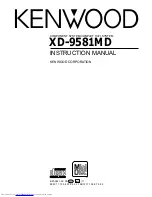
xStack® DGS-3420 Series Layer 2+ Managed Stackable Gigabit Switch Hardware Installation Reference Guide
iv
Intended Readers
Typographical Conventions
Notes, Notices, and Cautions
Safety Instructions
The
DGS-3420 Series Hardware Installation Guide
contains information for set up and management of the Switch. This
manual is intended for network managers familiar with network management concepts and terminology. For all practical
reasons all the switches in this series will be simply refered to as the Switch throughout this manual. All example
screenshots are taken from the
DGS-3420-28SC
Switch. In some examples, where we refer to the Power over Ethernet
examples, we’ll use the
DGS-3420-28PC
Switch.
Typographical Conventions
Convention
Description
[ ]
In a command line, square brackets indicate an optional entry. For example: [copy
filename] means that optionally you can type copy followed by the name of the file. Do not
type the brackets.
Bold font
Indicates a button, a toolbar icon, menu, or menu item. For example: Open the
File
menu
and choose
Cancel
. Used for emphasis. May also indicate system messages or prompts
appearing on screen. For example:
You have mail
.
Bold
font is also used to represent
filenames, program names and commands. For example:
use the copy command
.
Boldface Typewriter
Font
Indicates commands and responses to prompts that must be typed exactly as printed in the
manual.
Initial capital letter
Indicates a window name. Names of keys on the keyboard have initial capitals. For
example: Click Enter.
Italics
Indicates a window name or a field. Also can indicate a variables or parameter that is
replaced with an appropriate word or string. For example: type
filename
means that the
actual filename should be typed instead of the word shown in italic.
Menu Name > Menu
Option
Menu Name > Menu Option
Indicates the menu structure.
Device > Port > Port
Properties
means the Port Properties menu option under the Port menu option that is
located under the Device menu.
Notes, Notices, and Cautions
A
NOTE
indicates important information that helps make better use of the device.
A
NOTICE
indicates either potential damage to hardware or loss of data and tells how to avoid the
problem.
A
CAUTION
indicates a potential for property damage, personal injury, or death.






































